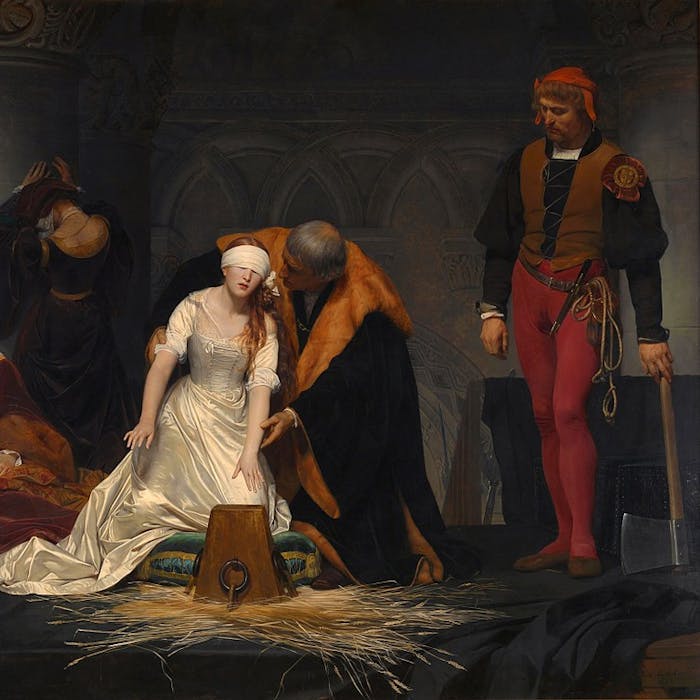
Lady Jane Grey - the Nine Days' Queen
Known as the Nine Days' Queen, Jane Grey was a teenage English noblewoman who claimed the throne of England and Ireland from 10th July until 19th July 1553.
Jane Grey had royal blood through her grandmother, who was the younger sister of Henry VIII.
In the 1530s, King Henry VIII had defied the Pope and put himself at the head of an independent Church of England in order to get a divorce from his wife and marry the younger Anne Boleyn who he hoped would produce a son to inherit the throne. This act resulted in tremendous religious turmoil which would play out for several generations into the future.
Henry VIII ultimately had three legitimate children. The two youngest, Elizabeth and Edward, were raised as Protestants, but the eldest, Mary, remained a staunch Catholic.
As King, Henry's son Edward VI was an unyielding Protestant. In 1553, the 15-year-old King realised that he was dying. He cut his Catholic sister Mary out of the succession and left the throne to his equally Protestant cousin Lady Jane Grey. He was persuaded to do this by his chief minister John Dudley, Duke of Northumberland.
Dudley was, in fact, planning to take the throne using the figurehead of the 16-year-old Jane Grey. He had already married her off to his youngest son Guildford. He also made sure that Edward excluded his other sister Elizabeth in his will. The pretext for this was that both sisters had been declared illegitimate by Henry VIII. Dudley probably also thought Elizabeth might be harder to manipulate than Jane, particularly as she was several years older.
After Edward's death, Jane was proclaimed queen on 10th July 1553 and awaited coronation in the Tower of London. Interestingly, she refused to allow her husband Guildford to be proclaimed King, to the annoyance of the Dudley family.
Meanwhile, Dudley had initially kept King Edward's death secret and summoned the King's sisters Mary and Elizabeth to court from their rural strongholds. Elizabeth declared she was too ill to travel and awaited events. Mary, more trusting, set out for London, but was met by sympathisers and warned that she was riding into a trap. She re-grouped and gathered an army.
Support for Mary grew very quickly, and most of Jane's supporters abandoned her. The Privy Council of England suddenly changed sides and proclaimed Mary as queen on 19th July 1553, deposing Jane. Her primary supporter, her father-in-law the Duke of Northumberland, was accused of treason and executed less than a month later.
Jane was held prisoner in the Tower and was convicted of high treason in November 1553, which carried a sentence of death — though Mary initially spared her life. However, Jane soon became viewed as a threat to the Crown when her father, Henry Grey, 1st Duke of Suffolk, became involved with Wyatt's rebellion against Queen Mary's intention to marry Philip II of Spain. Both Jane and her husband were executed on 12th February 1554.
Further reading
Links to external websites are not maintained by Bite Sized Britain. They are provided to give users access to additional information. Bite Sized Britain is not responsible for the content of these external websites.
